By Mike Killian
The jet age was already dawning by the end of WWII. Both the British and Germans brought their first jets online in 1944, but America’s first jet, the Bell P-59 Airacomet, was not up to par with the U.S. Army Air Force (USAAF). So, they canceled their order and called Kelly Johnson.
He and a hand-picked Skunkworks team at Lockheed Martin quickly got to work, and came up with the P-80, coined as the “Shooting Star”. They did the work in absolute secrecy. Only a handful of personnel even knew they were building a jet. It only took 143 days, from pencil sharpening to the prototype XP-80s’ first flight on Jan 8, 1944.
Four XP-80s were sent to Europe for WWII but never saw combat. Nevertheless, the jet age had arrived and was here to stay. They were re-designated as the F-80 in 1948 when the USAF came online and changed the “P” for Pursuit to “F” for Fighter. Lockheed built more than 1,700, adding B and C models, along with a reconnaissance model with a camera mounted in a translucent nose panel and additional equipment in the rear cockpit.
However, re-training veteran aviators who learned to fly and fight with old piston-powered aircraft was quite difficult, as was training new pilots for the jet. There wasn’t a trainer version, so Shooting Stars suffered a high loss rate due to a lack of experience with the new tech.
Lockheed again stepped in and spent $1 million of their own money to develop a trainer. It became one of their best investments ever. They lengthened the F-80 by three feet, added a second cockpit with dual controls covered by a distinctive, single-piece, seven-foot-long clamshell canopy, and unveiled America’s first jet trainer prototype, the TF-80.
The new jet first spread its wings on March 22, 1948. The USAF liked it so much that they issued a contract and designated it as an all-new aircraft, the T-33A. The new trainer and production quality were so high that only one out of four (selected at random) were flight-tested before delivery.
Lockheed produced 5,691 T-33s from 1948 – 1959, in different variants including a reconnaissance/photo jet, and a ground attack version AT-33A, which came with machine guns and could carry up to 2,000 pounds of firepower for air-to-surface engagement. At least 1,046 more T-33s were built under license by other manufacturers.
The F-80 saw considerable action in the Korean War, winning the first jet-vs-jet dog fights in history, but T-33s also flew combat missions in Korea, mainly as combat orientation flights. Some also flew recon and ground attack sorties. However, the Shooting Stars were already obsolete and being outperformed by Migs, who not only had heavier armament but were faster too.
The end of the Korean War also brought the end of the F-80, unable to compete with other jets. The T-33, however, still had much to offer as a trainer. Between 1953 and 1968, every USAF pilot training in the T-33 which was nicknamed the “T-Bird” and known as the “Ace Maker”. The Navy and Marines also used them through the 1960s, strengthened and modified with arrestor hooks for aircraft carriers.
Allies worldwide used T-33s for decades. And while their days in active military service anywhere are gone, private owners are keeping them alive and well, with some even still supporting USAF and Navy test pilot training, like Gregory Colyer, who owns 3 of them and calls them the Ace Makers.
He and his team at Ace Maker Airshows fly them at air shows across the United States every year. The USAF and Navy even still see a benefit with the T-33, contracting him as an instructor supporting training at Edwards AFB Test Pilot School (TPS) and Paxutent River Navy TPS, as well as supporting Air Test and Evaluation Squadron 23 (VX-23).
“The test pilot students love flying the Shooting Star and are surprised by her performance,” says Colyer. “They come away with a huge grin and love it! Most of them say it’s their favorite plane they’ve ever flown. It’s a great airframe, the students really learn a lot. My first time out there was a freebie “qual ride” for the graduating class, they didn’t have to do a report on it or anything, it was just to go out and fly something different, but all 24 students picked the T-33 as their favorite airplane and said they learned the most from the T-Bird. So they brought me back and now I’m one of the first qual rides that they do at TPS. Over 75 years of the T-33 and still going strong!”
“During my first deployment at Edwards AFB the F-35 Test Squadron had me fly as a target for them to test new updates. The 4th gen fighters they were supposed to fight were having dispatch reliability problems, so they ended up fighting a first-gen fighter.”
“With the students, it’s an unknown aircraft qualification, so I give them an hour ground school on the T-33 and then give them a cockpit checkout, then they go through the POH and get all the performance numbers for takeoff and time-to-climb and things like that, then we go up and fly their test cards which includes a little bit of everything; rudder doublets, controllability issues, the aileron boost on and off, aerobatics and low-level flying, just as if they were flying the jet for the first time back in the late 1940s”.
“The Navy TPS students evaluate the T-33 as a ground attack aircraft too, while the USAF TPS students evaluate it as a primary and advanced trainer,” adds Colyer. “So they are evaluating it for its intended use as if they are back in the 1950s. Each branch is doing different stuff. With the Navy TPS we still do acceleration and stability checks etc same as with USAF TPS, but with Navy TPS we do roll-ins on targets and stuff like that as well.”
[wbn_ads_google_three]
Thousands of fighter pilots who flew combat in Vietnam trained in the T-33, but as other jets came online the Ace Maker saw the sunset on its days as an advanced U.S. trainer. The T-bird would however still train cadets from the Air Force Academy until 1975. They also served as drone controllers, test aircraft, target tugs, drones, utility aircraft, and proficiency trainers, with some of the former USN T-33s even being used as full-scale aerial targets for air-to-air and surface-to-air missile tests.
Colyer’s jets are actually Canadian variants, designated CT-133, with the main difference being a British Rolls-Royce Nene engine. The RCAF retired them from service in 2005 and sold them off in 2008.
“The Rolls Royce engines developed about 500lbs more thrust, with about the same fuel burn,” added Colyer in explaining the biggest differences between the American and Canadian versions. “Another big difference is the Canadairs have a double-ended fuel boost pump in the fuselage tank for better fuel transferring to the engine during high G or negative G.”
“My passion started young, all I ever talked about was being a pilot,” says Colyer. “No other aviators in my family, nor did we know any, so I don’t know where I got it from, but I remember telling my kindergarten teacher I was going to be a fighter pilot. After high school, I joined the Army to fly helicopters, but a knee injury kept me from flight school. I attained my PPL at 18 while in the Army at Ft ORD flying T-34s with the Naval post-graduate school in Monterey CA. Leaving the service in 1986 I wanted to be an airline pilot, but a newborn baby made that financially impossible with a wife that didn’t work and $9.50 an hour wages at regional airlines, so I became an air traffic controller. I kept flying Navy T-34s to build my time until importing an L-29 from Romania in early 2001, cutting my teeth in the jet world on the L-29 and then the L-39.”
“The Shooting Star was my favorite jet growing up. Its classic lines just sang to me. I flew a friend’s T-33 in 2007 and knew I had to have one. I felt like I had been flying it all my life. Acquired my first one in early 2008 and 5 hours later I was type-rated. I bought her to fly for fun and could afford to fly it 30 minutes a week by maintaining it myself with the help of a friend who was a former T-33 mechanic. Soon after I bought her, however, the economy tanked, and jet fuel rocketed to $8 a gallon. I couldn’t afford to fly my jet, and could barely afford to start it! So I figured I’d become an airshow pilot.”
[wbn_ads_google_three]
Ace Maker I, serial 306, was built in 1954 and sold surplus from the RCAF in 1977 after serving at Cold Lake, AB, before moving on to flight systems in Mojave, CA for test and chase duties. It was then bought and restored in 1998 from the previous owner who kept her in Mojave, flying her about 10-15 hours a year until Colyer purchased the jet in 2008.
“With no formal aerobatic instruction and nobody around to teach me, I read the RCAF T-33 flight and aerobatic manual and taught myself, came up with a routine and business plan, named my jet and company Ace Maker Airshows and got my first SAC card, level 4 (800 ft hard deck) to perform at airshows. I did a couple of shows in 2008 for gas and hotel, but 2009 was my first full year on the airshow circuit and I flew about 20 shows. One show paid me $500 but got gas, hotel, and car, and flew my jet for about 100 hours. I started my second season with a 500 ft card charged a fee, booked another 20+ shows, and was able to move my card to 250 feet halfway through the season since I was flying so much. I made enough money to pay all my expenses. I started my 3rd season with a surface-level unrestricted waiver, booked another 20+ shows, and turned a good profit. With most of the hourly cost to operate a T-33 being fuel, and not having to buy any, it was a great platform for airshows. Leap-frogging my jet across the country, staging the jet at the next show, and airlining home in between, with 800-1000 mile legs it made it easy to cover the country and not have to buy any Jet A. But if my jet was on one coast or the other and I had an off week and a show on the other coast wanted me, I had to say no because the cost to fly the back and forth did not make sense. The problem solved itself in 2014 when another jet became available, and after discussing it with my wife, I purchased it, naming it Ace Maker II and painting her in 51st F/B group colors from the Korean conflict.”
Ace Maker II, serial 452, was also built in 1954. It went through the AUP Overhaul (avionics upgrade ) in 2003 when the RCAF was going to extend the life of their T-33s through 2035. She was flying at Cold Lake and Mountain Home AFB in Idaho, then after upgrades was assigned to AETE the RCAF Test Pilot School at Cold Lake. She was the last T-33 retired from the RCAF in 2004 too, and only flew 125 hours after her upgrade. She was sold at auction, then ferried to Pease, NH where she sat until Colyer purchased her in 2014.
“Now I had an east coast and west coast jet, and between the two I was able to fly nonstop anywhere in the country,” says Colyer. “I had a record year in 2014 flying over 30 venues. I was doing as well or better financially flying shows as I was as a controller, so I retired from ATC in Jan of 2015 after 27 years and just flew airshows. So the next step was to hire another demo pilot, as I could not be in 2 places at once. I met Shaun “Buzz” Roessner in 2015 on the show circuit as he was the Navy’s Super Hornet demo pilot. For the next 3 seasons, we became good friends, and he had mentioned when he got out of the Navy that he wanted to fly shows for a year before going to the Airlines, so I offered him a full-time job as Ace Maker Airshows’ East Coast pilot. We trained and got him certified during his last season as a USN Hornet demo pilot in 2017. In 2018 with two teams Ace Maker Airshows flew 50 venues across North America, but Buzz went to UPS in 2019, so I was solo again.”
“With TPS contracts and a full season of shows I enlisted the help of “Scratch” Mitchell, ex-RCAF Snowbird “Boss” and CF-18 Demo pilot, and good friend Tim Tibo, a German aerobatic pilot I trained in 2010 to fly part-time for me at shows. I added Ace Maker III in Dec 2018.”
[wbn_google_ads_four]
Ace Maker III, serial 610, was also one of the last T-33s built in 1959, and also went through extensive upgrades and flew about 200 hours before being sold at auction in the same batch as Ace Maker II. She then went from Reno Stead to Texas, only flying less than 50 hours in over 10 years until Colyer purchased her.
“I had the other 2 airframes painted in the same 51st F/B group colors as AM 2. I feel very fortunate and lucky that this all worked out the way it did”, says Colyer. “Never in my wildest dreams had I thought I’d be able to make a living flying my T-33, let alone be where I am today in the airshow world and teaching at TPS. The T-33 is an icon of American military aviation history and has a robust solid airframe with long legs which makes it perfect to fly on the airshow circuit. It’s super maneuverable and holds her energy well, I can go fast, then slow down and fast again. In the demo, I work between 115 and 450 knots. I can keep her in front of the crowd the entire demo with lots of vertical maneuvers & tight turns. With her beautiful lines, she just looks great, flying smooth and graceful. She just makes it look easy to look good. Kelly Johnson nailed it.”
“I pinch myself every day for what I get to do,” says Colyer. “I was lucky to be in the right place, at the right time with the right jet, and didn’t mess it up. A lot of people told me that I couldn’t do it because I wasn’t rich, but if you never try, you’ll never know. Chase your dreams and you can make it happen.”
The T-33 has helped train more jet pilots than any other training aircraft type in history. Approximately 65 are currently flying in private hands today, with many also on display at various museums. America’s first operational jet had an unexpected and long-lasting legacy, and the T-33 trainer for it does not appear to be flying into the sunset any time soon, thanks to guys like Wired.







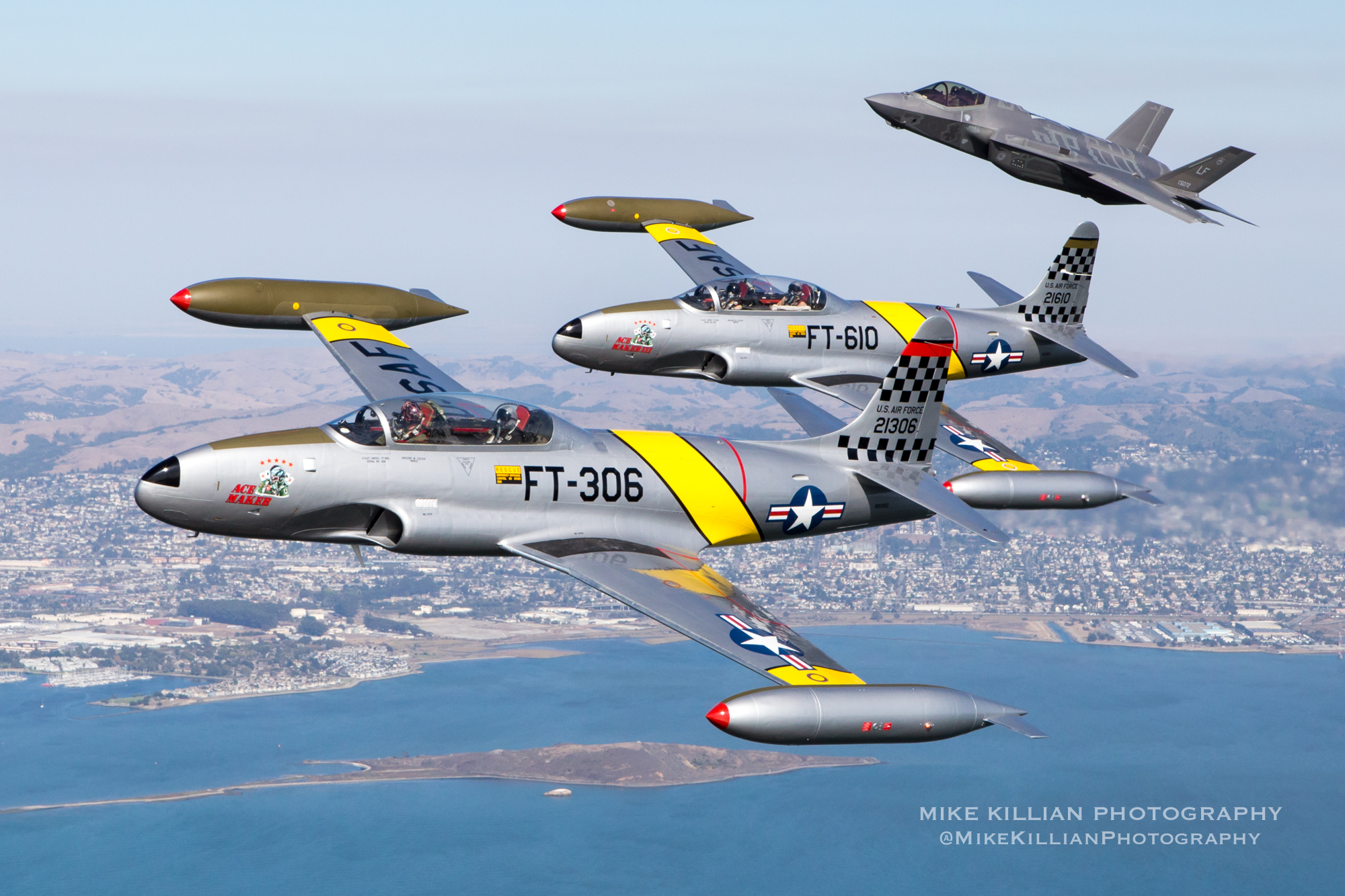

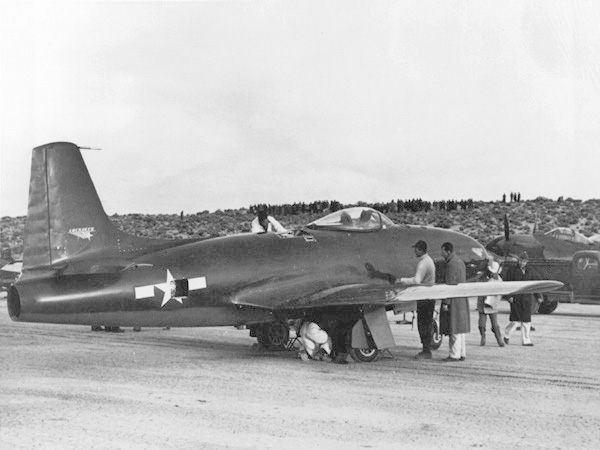
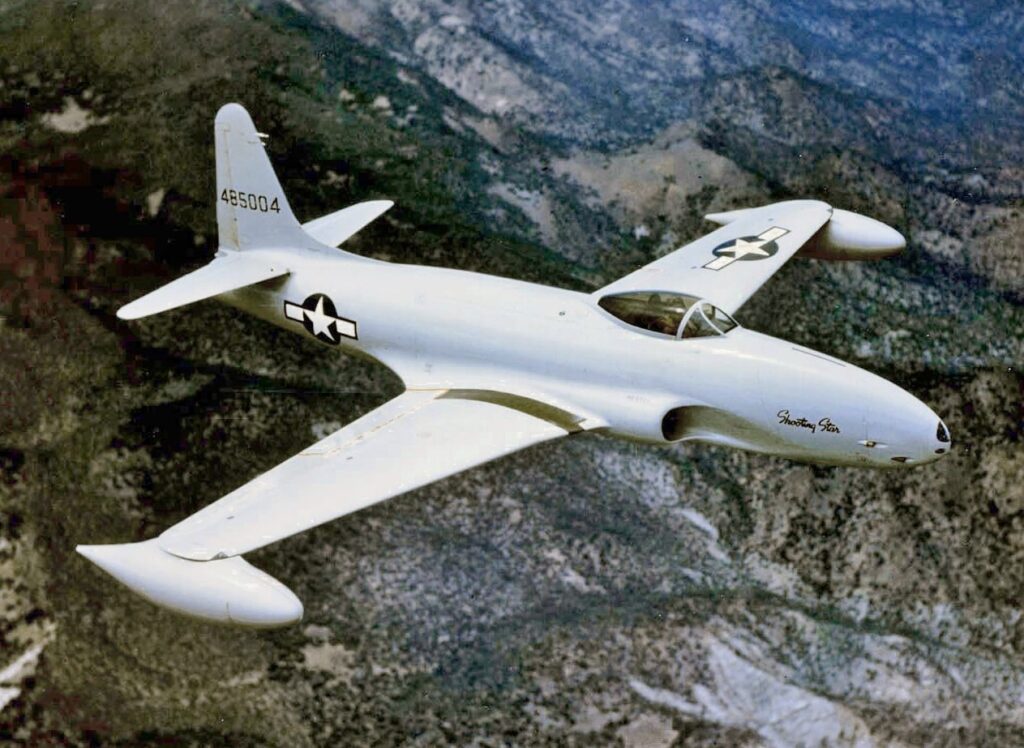
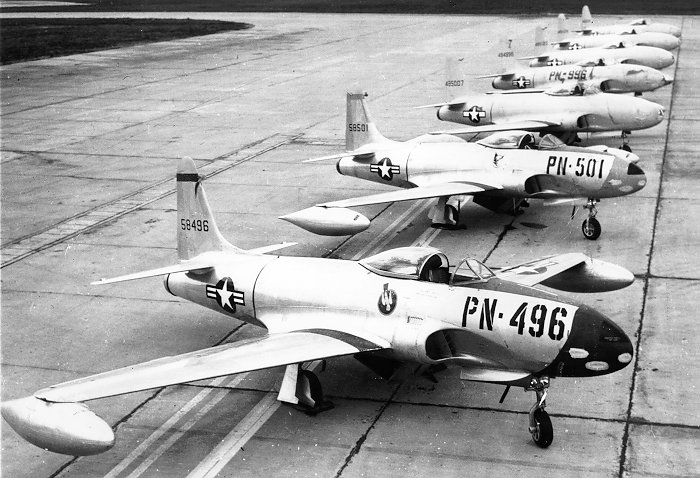
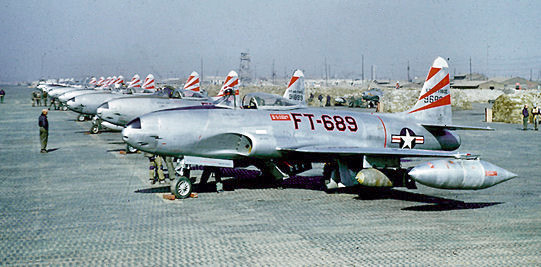
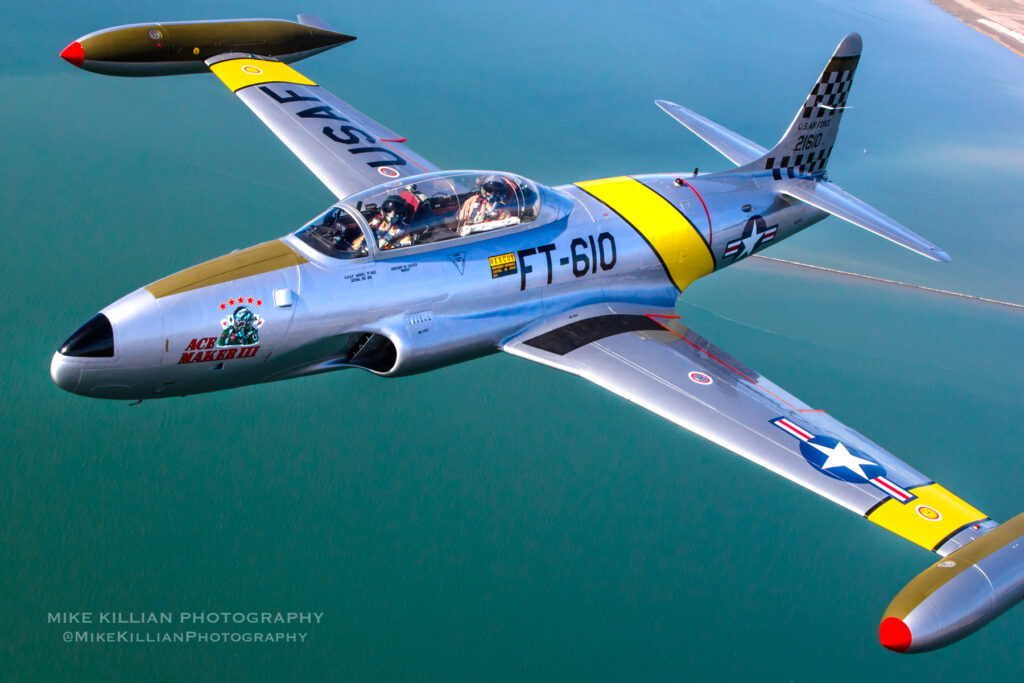
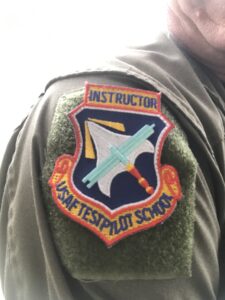
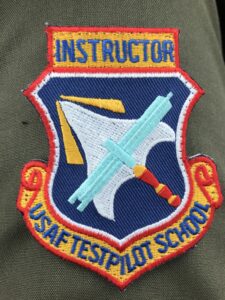
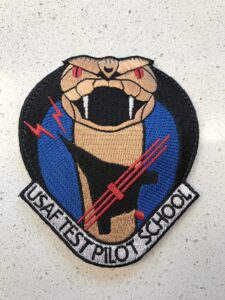
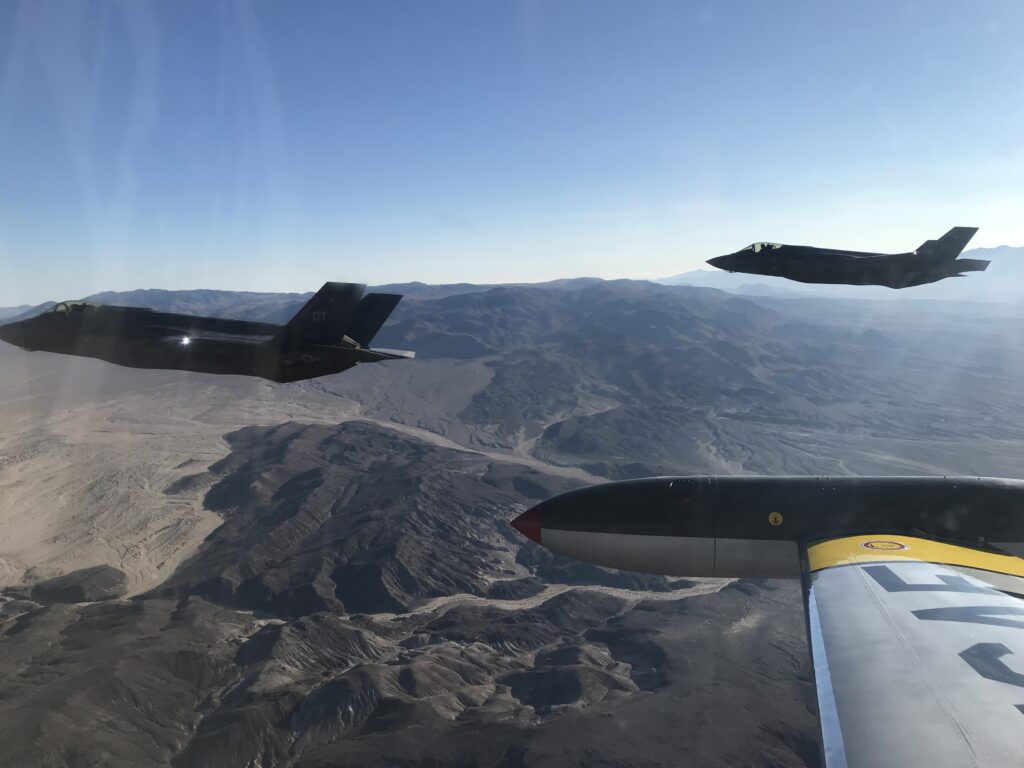
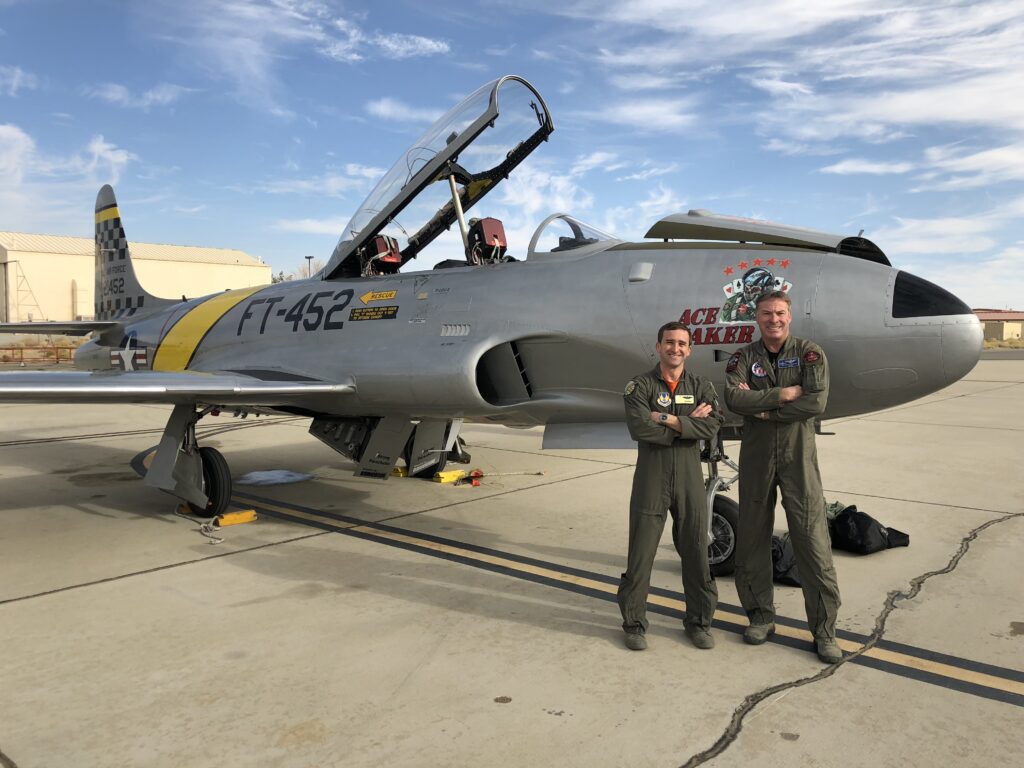
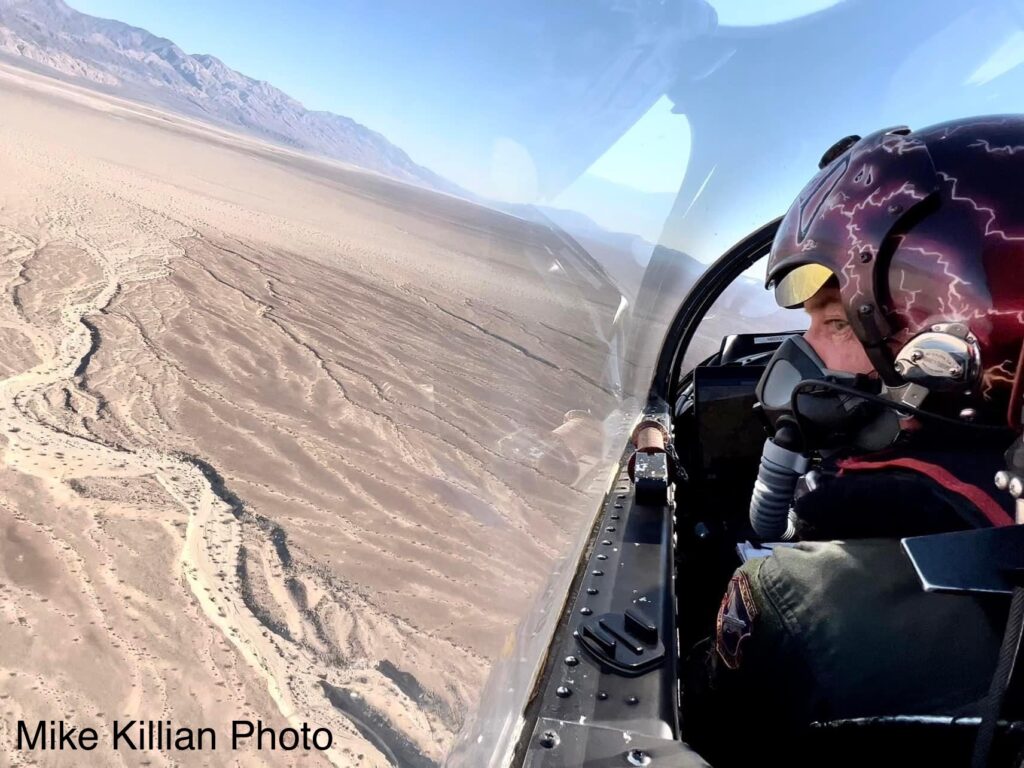
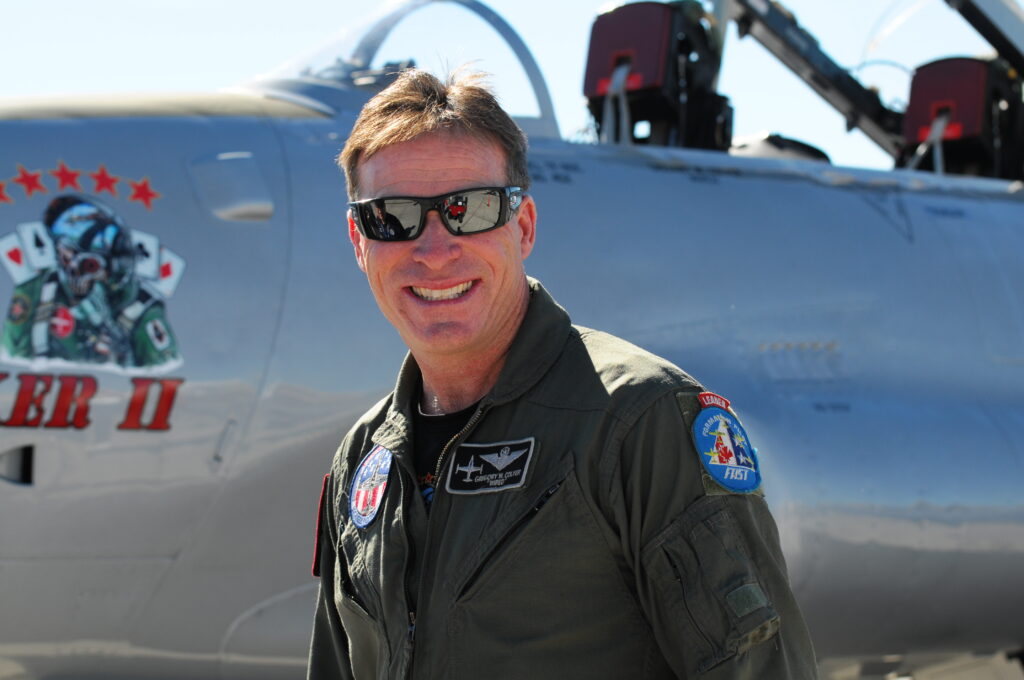
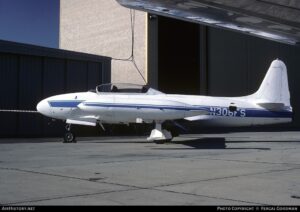
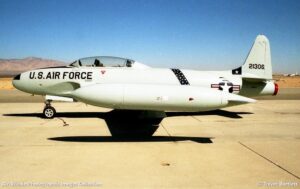
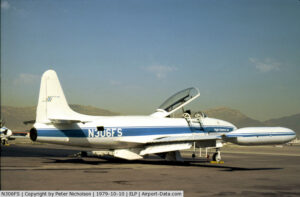
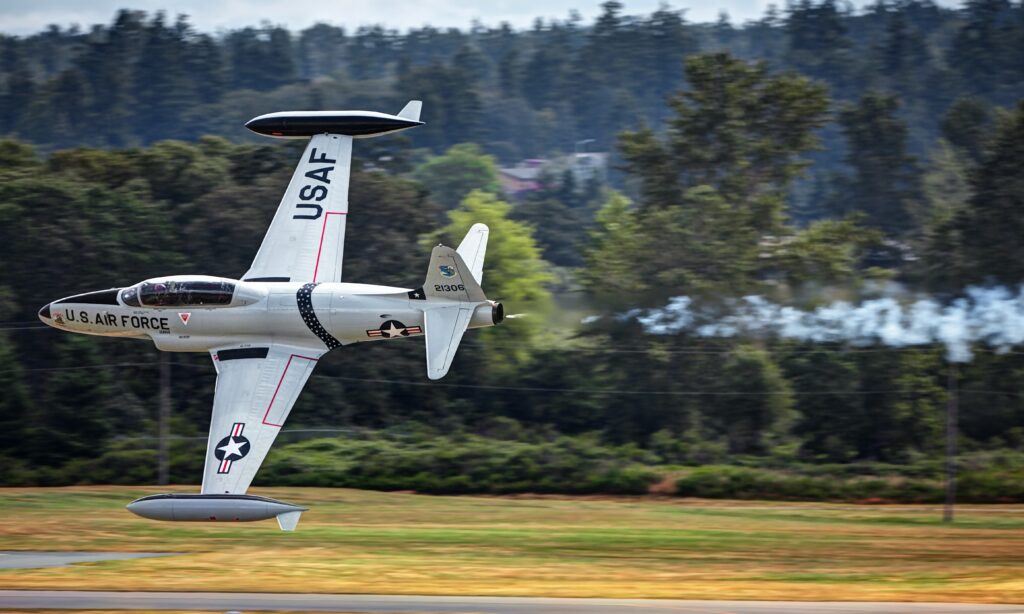
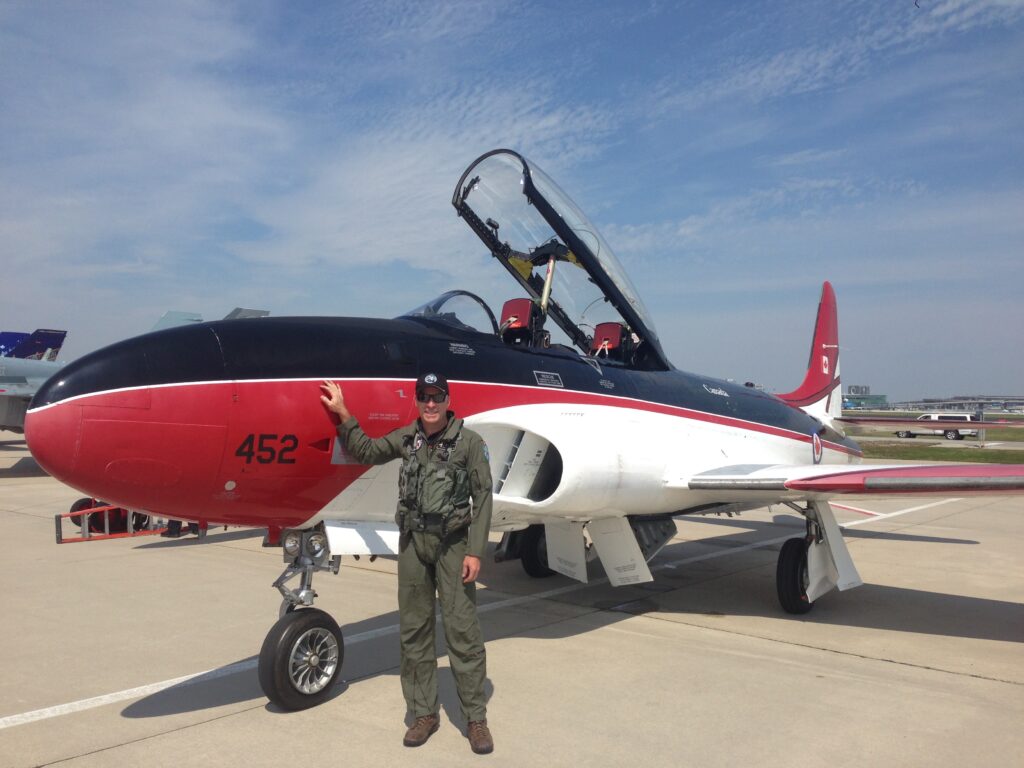
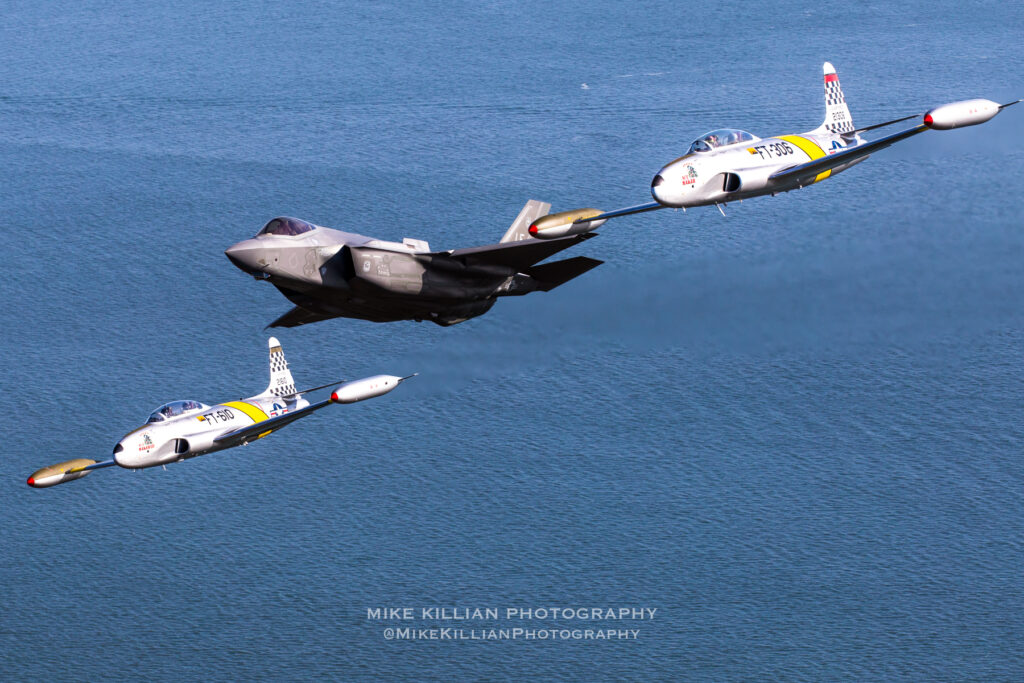
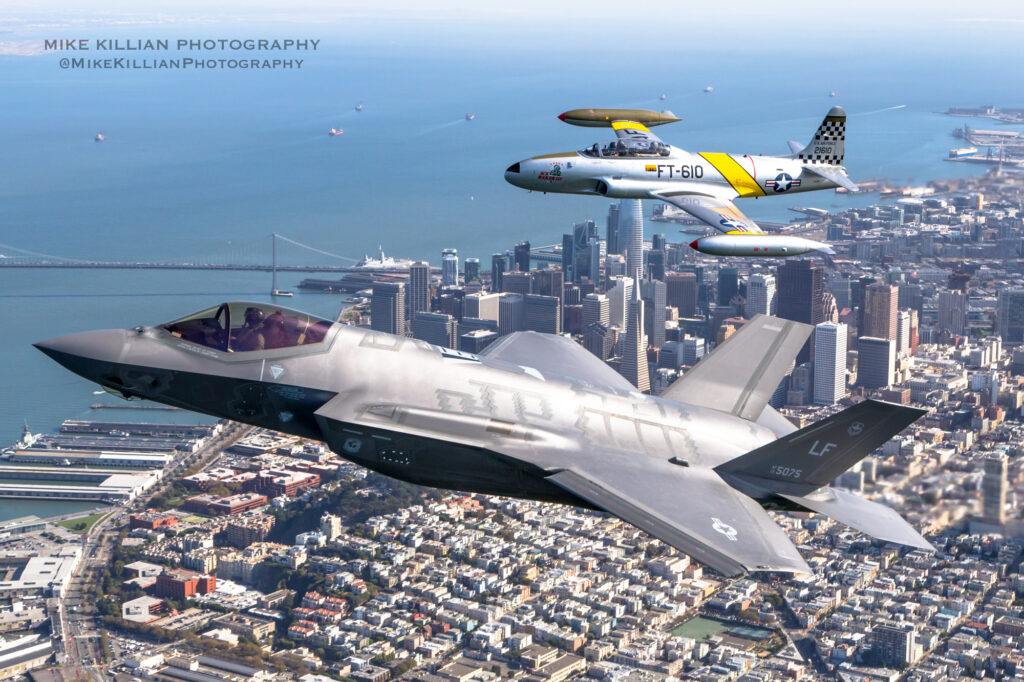
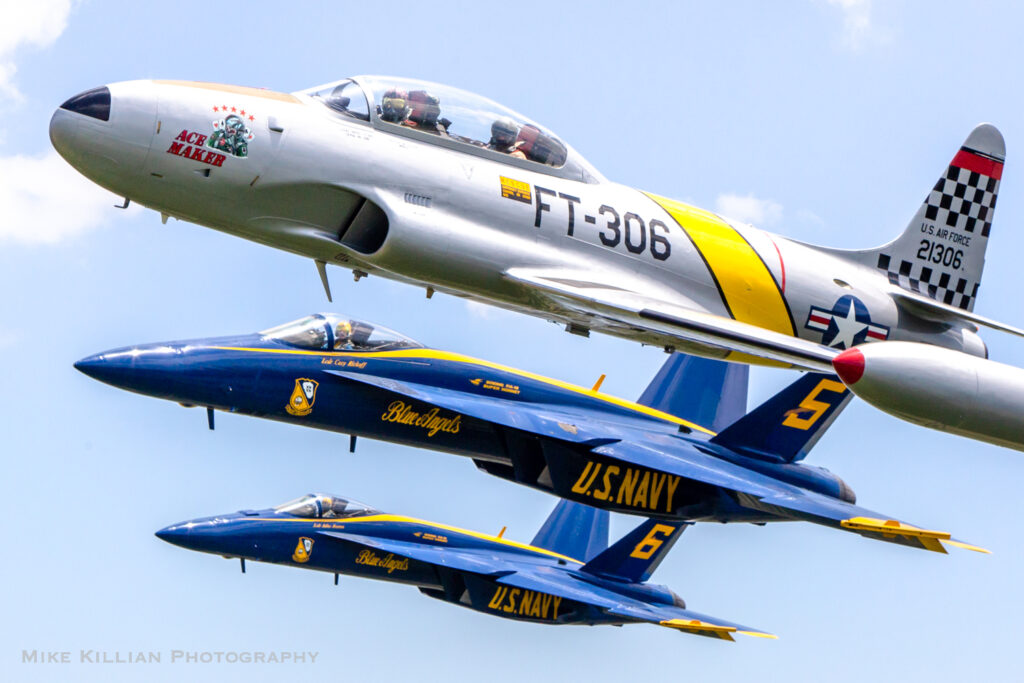
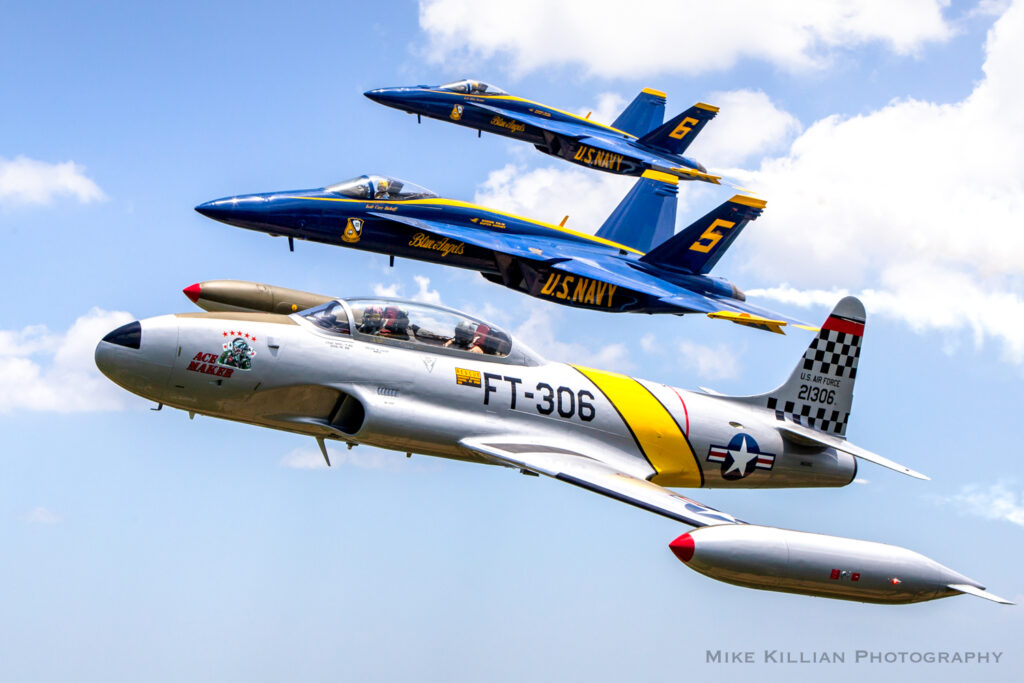
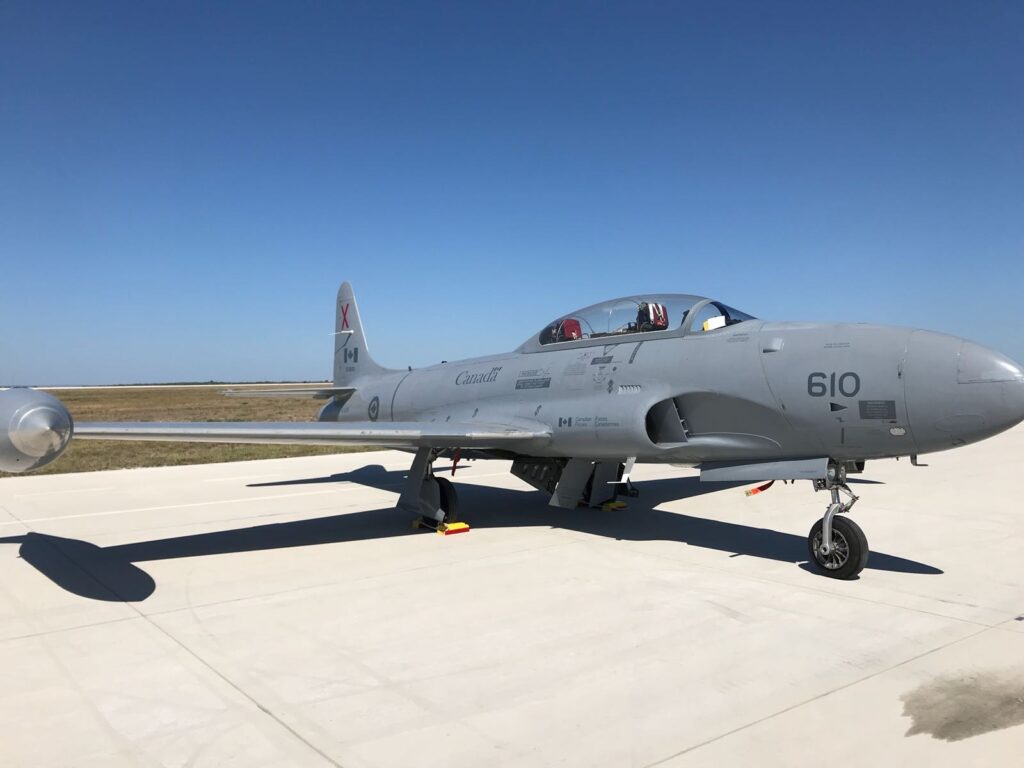
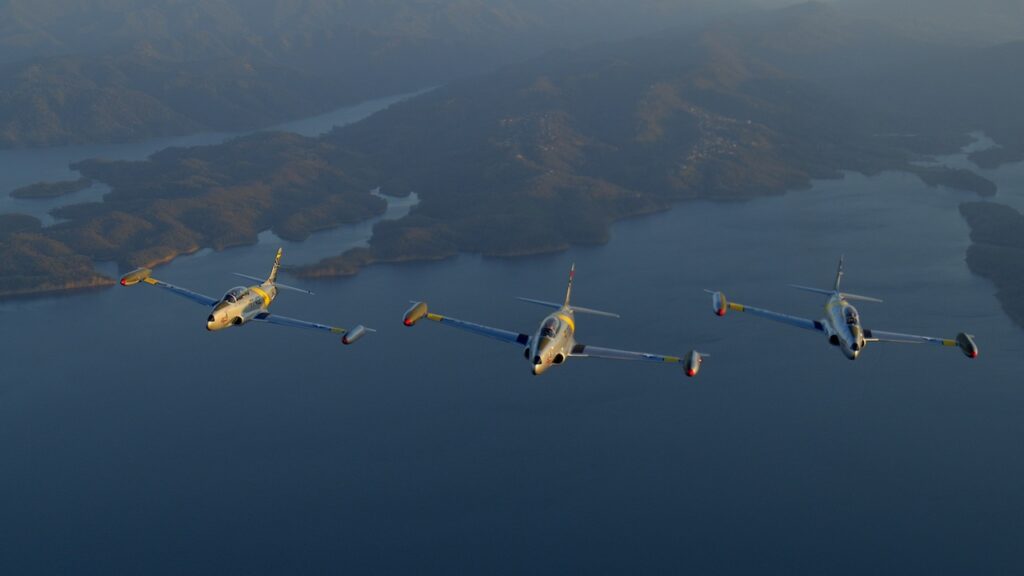
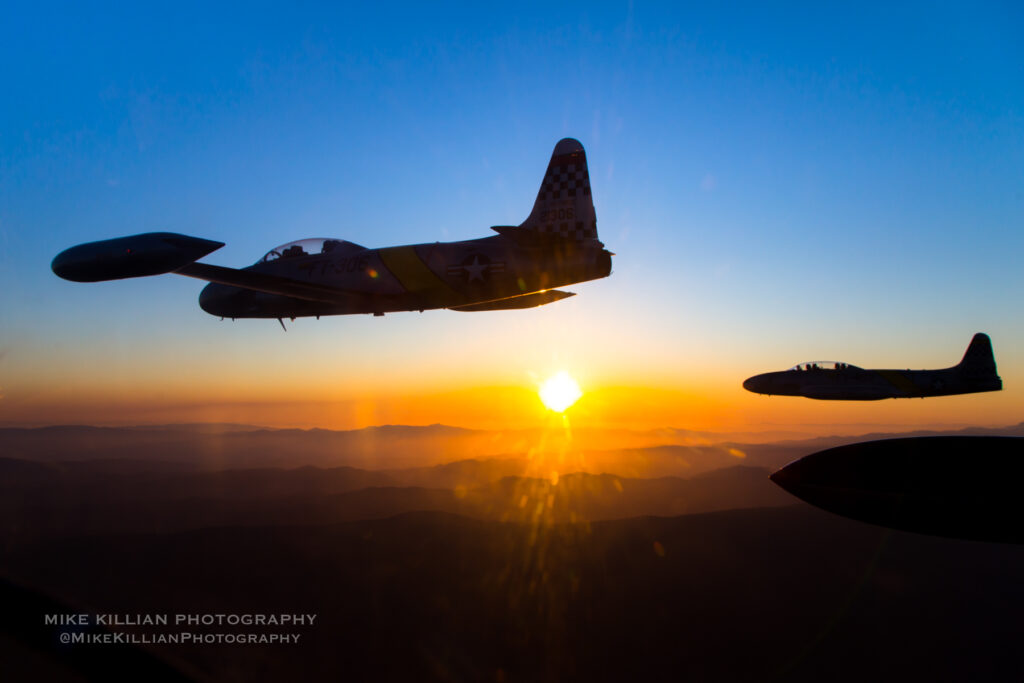
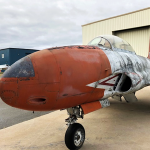
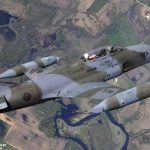
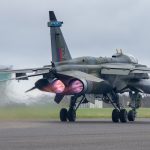

![B-29 Doc History Restored Tour To Visit Atlanta [EVENT CANCELED] 34 DSC 7474](https://vintageaviationnews.com/wp-content/uploads/DSC_7474-150x150.jpg)
![Ex-RNZAF de Havilland Mosquito NZ2308 First Engine Runs in New Zealand 35 DH Mosquito T.43 NZ2308/ZK-PWL about to start its two Rolls-Royce Merlins for the first time in nearly 70 years. [Screenshot from Avspecs Ltd video on Facebook]](https://vintageaviationnews.com/wp-content/uploads/Ex-RNZAF-de-Havilland-DH98-Mosquito-NZ2308-Firs-Engine-Runs-in-New-Zealand-150x150.png)












